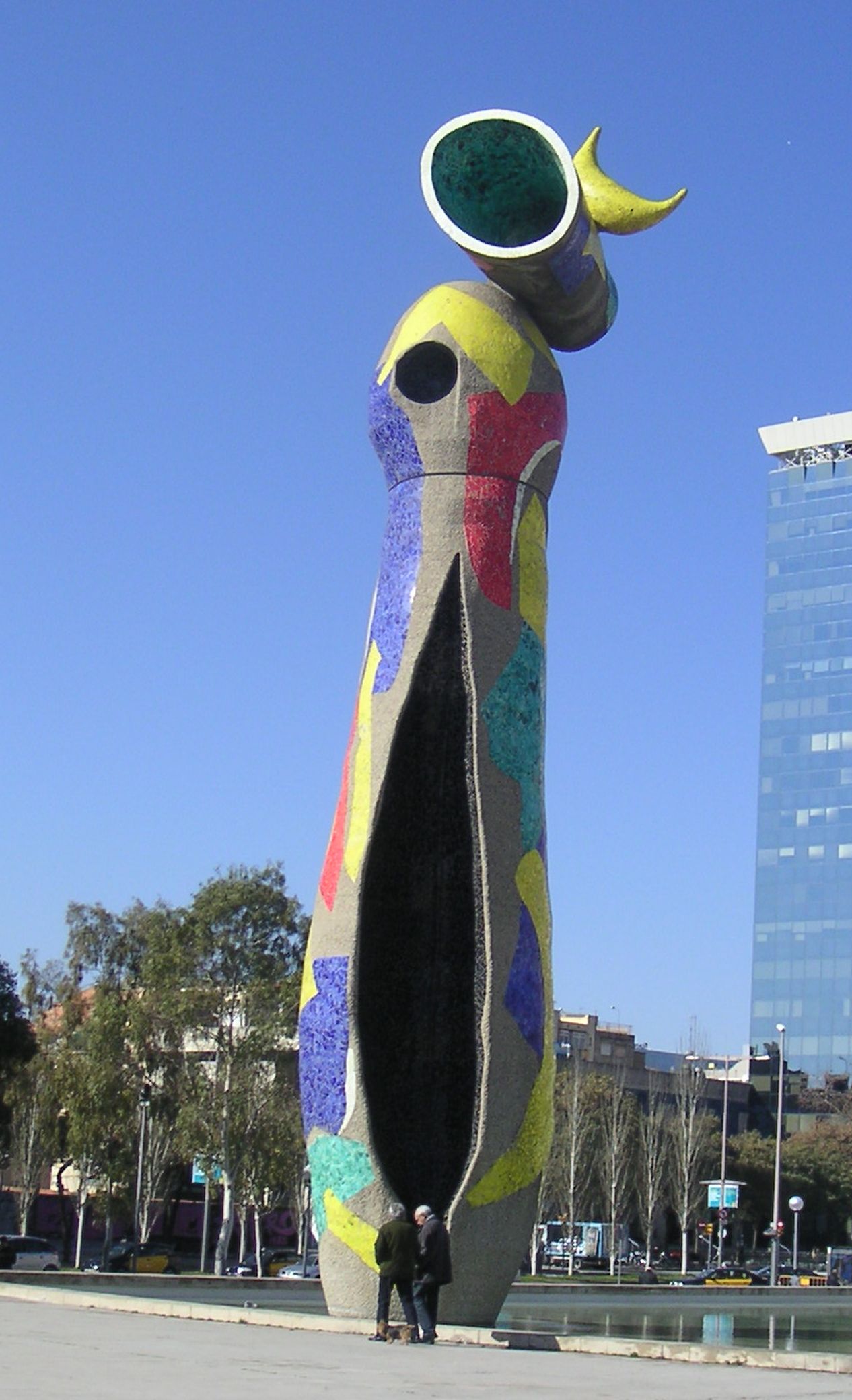Dona i Ocell (Woman and Bird) is perhaps Joan Miro's most famous sculpture. It stands at 22m tall and is located in the Spanish city of Barcelona.
Joan Miro Park in the centre of the city hosts this tall sculpture. Miro collaborated with others in order to complete this ambitious project, with much work to do in order to complete it. The overall piece was completed in 1983, but the artists who have been involved with other projects at the same time. Miro himself was 90 at the time that Dona i Ocell (Woman and Bird) was put together and he would sadly pass away in the same year, making this one of his final designs. Many famous artists have become more and more ambitious towards the end of their careers, tending to focus on landmark artworks rather than producing huge numbers of works. The elements found within this design are typical of Miro's career, dating back several decades, and so that content was nothing new for him.
It is known that Miro himself could not appear for the unveiling of the sculpture due to poor health, though this should not have been much of a surprise as he was particularly old by 1983. He wanted to continue to strengthen his legacy, meaning the size of this piece was important to him. For it to be displayed in central Barcelona, that was also a great motivator for him. As much as he travelled around during his career, Catalonia always remained particularly important to him and the climate and culture of this region would greatily influence much of his work. The use of a woman with a bird is a common theme for Miro and perfectly summarises much of what he produced in the preceding few decades, marking the sculpture as a fitting contribution for his last year of active work.
Miro was a painter, first and foremost, but in his later years he would expand into other mediums, normally in conjunction with others who could bring specialist knowledge with them. There were many sculptures, but most were fairly small, similar to the sort of size used in the Renaissance for model demonstrations. Miro liked this size because it was suitable for having around his studio and would not take too many resources to be completed. He could also carry out all of the work himself where as the later, larger pieces were always going to be more than just a one-man job. Dona i Ocell includes decorative tiles all around the exterior and this was completed by a ceramicist named Joan Gardy Artigas, with whom Miro was very close and would learn a lot from during their various projects together.





